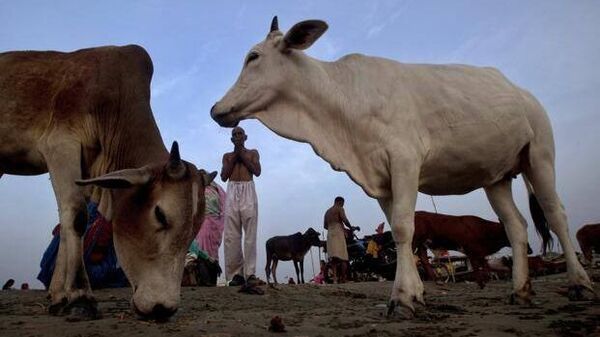A host of factors, such as high cost of feed, inclement weather, a disease outbreak and demand-supply mismatch is pushing India, the world’s largest dairy producer, to consider imports.
According to the animal husbandry and dairy department, India’s milk output grew by 6.3% to 221 million tonnes in 2021-22 but production is estimated to remain stagnant in 2022-23.
Earlier this week, animal husbandry secretary Rajesh Kumar Singh said India will take a call on importing milk products such as butter and ghee after assessing the supply situation. Retail milk prices have been on the boil, increasing by about 15% over the past year.
High prices of milk and cereals is one of the reasons why India’s retail food inflation has remained stubbornly high. In February, retail dairy prices were 9.7% higher year-on-year while cereal prices were a staggering 16.7% higher.
In a way, high cereal prices also contributed to higher dairy prices as grains like maize and wheat are used to make livestock feed.
But high milk prices are a consequence of both immediate and longer-term factors. After the pandemic hit, dairy producers had to deal with falling demand as social ceremonies were postponed and consumption demand from hotels and restaurants nosedived. Farmers responded by slashing herd sizes. So when demand rebounded after lockdown restrictions were eased, supply fell short.
The fragile industry was dealt another blow thanks to the lumpy skin disease outbreak in 2022. Official estimates put the death toll at 1,89,000 cattle.
Also read: How did India, the world’s largest milk producer, end up having to import it?
Almost simultaneously, Russia invaded Ukraine, causing grain and oilseed prices to shoot up. This led to higher prices of animal feed, which comprises over 70% of dairy production costs. The dairy industry, led by the cooperative sector, was able to pass on high production costs to consumers since milk and milk products are essential items.
The result? While production in 2022-23 is estimated to be stagnant, demand rose by 7-8%, pushing retail prices higher.
Another factor, which is cited less often, is the impact of rising temperatures on cattle productivity. Last year saw summer temperatures breach old records and this year is expected to be no different. Dairy animals usually produce less milk during summer and more during the winter. However, there is almost no discussion on how to deal with the impact of rising temperatures on milk yields.
Another long-term factor is low productivity. India is the largest producer of milk in the world but cattle milk yields are 60% of China’s and less than a fifth of the United States’s.
Farmers in India have also been replacing cows with buffaloes since the former is not allowed to be slaughtered due to legal restrictions and religious beliefs. This means farmers lose out on the end-of-life value for a spent animal, which could otherwise fetch them between ₹10,000 to ₹15,000 per animal. That money is usually reinvested to replenish herds.
The crackdown on livestock trade and transport — both for dairy and meat — is also a likely factor why farmers may be losing interest in rearing cattle.
As a result of these short- and long-term factors, it’s no surprise that Indian consumers will have to depend on periodic imports of skimmed milk powder to tide over demand-supply imbalances. Poor households will have to forgo tea in their milk and slash their daily consumption.
Download The Mint News App to get Daily Market Updates.
More
Less
#Mint #Explainer #factors #forced #India #import #milk
